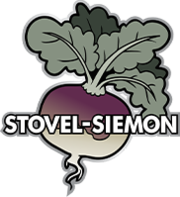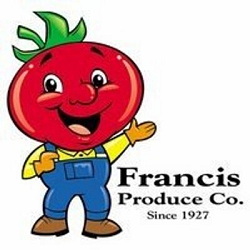Eating the rainbow has become easier and more flavorful in recent years, especially when it comes to anthocyanins — the purple pigment that's in blueberries, blackberries, red grape skins, eggplant and now — thanks to genetic modification — the purple tomato.
Nathan Pumplin is CEO of Norfolk Healthy Produce, the company behind the Empress Purple Tomato, a bioengineered tomato made by adding two genes from snapdragons. These tomatoes are a rich source of antioxidants because the purple pigments are in the whole tomato, not just the skin.
“They're really good for people's health, and most of us don't eat nearly enough anthocyanins,” Pumplin says.
But the trained molecular biologist, who has worked for nearly 20 years in R&D and commercializing new types of plants that solve problems, says bringing a GMO purple tomato to market has not been without challenges.
“The first GMOs were really marketed to farmers, and the innovative farmers said: ‘OK, there's these new GMO crops, do I want to use them?' And they very quickly saw: ‘Wow, this solves a lot of problems for me. Yes, I want to adopt them,'” he says. “What was forgotten was that it was food being produced and sold to consumers, and consumers never had an opportunity to engage with GMOs in the food system.”
“There were people who felt the food supply was playing God in the lab by adding DNA to create new varieties, and no one had asked them if they wanted to opt in or opt out,” Pumplin continues. “I think a lot of people felt like they were treated like guinea pigs. Their opinions and their values weren't respected when those first crops launched. And that's a huge problem.”
Adding to the challenge is the reality that most consumers don't know what a GMO is, making education critical to driving demand for the purple tomato.

“What's really gratifying is that we find, generally, 80% to 90% of people in the U.S. want this product,” Pumplin says. “They know it's a GMO, and they get a chance to ask questions like: ‘Well, don't all GMOs have pesticides?' And we can say: ‘No, there's no pesticides on these. And they have the opportunity to ask a lot of questions, and then the vast majority of people say, ‘OK, I really want this.'”
While Pumplin says backlash against GMOs halted innovation and new product development for years, now he sees things coming full circle. And as consumers are hungry for the new, the flavorful and the nutritious, the fresh produce industry has innovated with the help of GMOs in some exciting ways.
“Now we have some breakthrough products, and so I'm really proud to say, our purple tomato — which is marketed in grocery stores right now under the Empress brand — is doing extremely well,” he says. “We also have the Pinkglow pineapple from Del Monte on the market. We have the Arctic Apple, which is growing and doing very well in a lot of segments.”
“I think we're on the brink of a widespread recognition within the industry that this is something that consumers are no longer afraid of,” he adds. “They simply want a better product. They want something they can afford. They want something that their kids will eat. They want something that's nutritious, that's beautiful, that tastes good, all of that.”
But while today's consumer might be ready for the better, purple tomato, Pumplin says it's the produce industry that needs to catch up on GMOs.
“There's just simply so little fear among the broad consumer base right now, and also such a desire for new and better products,” he says. “A big part of my messaging is to try to make sure that folks in the produce industry, these key decision-makers, understand where their consumers are.
“Because I think that's actually the biggest gap right now. Consumers have moved on, and a lot of the decision-makers in the industry, haven't caught up to where the consumers are,” he says. “They think the consumers are still 10 years ago, afraid of GMOs, and that's not true anymore.”
















